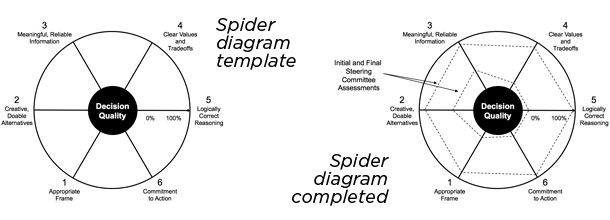In our past three issues, Jim Matheson penned a series of articles, building from the reasons companies like Eastman Kodak and others fail from “brain death”, to Organizational IQ, which measures the ability of an organization to get smart and avoid brain damage.
Much of the resistance to change is cultural. People often remain in their comfort zones and resist anything that will move them from that zone. This is often true of management of companies flush with success. Even though they see the possible dangers looming on the horizon, they resist taking action as the corporate brain slowly atrophies and eventually dies.
Booz & Company’s 2011 Global Innovation 1000 report, “Why Culture is Key”, addresses the importance of culture in driving innovation. “…Spending more on R&D won’t drive results. The most crucial factors are strategic alignment and a culture that supports innovation.”
Kodak’s filing for bankruptcy is a classic case of cultural inertia. Former executives acknowledge that the company saw the digital threat to traditional photography coming in the 1980s. And even though they had access to technology and, at the time, sufficient resources to get into the game, they reacted much too slowly and found themselves behind the eight ball.
Another recent example: American Airlines; here is one of the country’s former airline stars, fighting for its life after failing to respond as mergers among its competitors siphoned its revenue and profits. Rather than acting with foresight, the company waited too long. In the interim, American lost market share, lost market value and incurred the wrath of its union members. At this writing, this once proud company is threatened by a takeover by U.S. Airways.
The Booz & Co. study of almost 600 innovation leaders revealed that “half of the companies reported inadequate strategic alignment and poor cultural support for their innovation strategies. Possibly even more surprising, nearly 20 percent of companies said they didn’t have a well-defined innovation strategy at all.”
Reflecting on our experience during the past 20 years with major companies, we are afraid that things haven’t really changed that much in two decades.
My colleagues addressed this and related issues in their research into Organizational IQ, concluding that companies with high IQ outperformed others in their industries. (To review the concepts of Organizational IQ, refer to the March and April 2012 issues of ValuePoint.)
So, how does one go about increasing the IQ of an organization? This is a cultural change – one does not easily change the culture of an organization. Does this mean you give up in the face of inertia? We don’t think so.
One answer comes from Vince Barabba, author of many books and publications on management, market research and decision-making. A former executive of Xerox, Kodak and General Motors, as well as having served as head of the U.S. Census, he has lived in the trenches and knows what it’s like to effect change in large organizations. In an interview with Jim Matheson several years ago, Vince made a profound observation, “Change the decision process and the culture will follow.”
Take a moment to think about your organization’s decision processes and, in turn, the quality of decision-making. The Decision Quality spider diagram provides a good start. Look at the six dimensions of decision quality on the spider diagram below, discuss each dimension with your colleagues and estimate your application of each on a scale of 0% to 100%. Try this out on a single decision and then compare several decisions.

If you would like to delve more deeply into decision quality, I invite you to read chapters two and three of “The Smart Organization: Creating Value through Strategic R&D” (Matheson and Matheson, Harvard Business School Press). See where you rate, where your colleagues rate and finally how you and your colleagues view the company as a whole when it comes to making the important decisions that impact the future of your company. This can be a good start to improving your decision processes, taking initial steps towards improving the decision-making culture of your organization. And, most important, keeping your organization’s brain alive and well.



